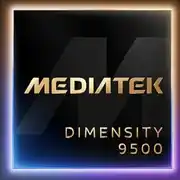Qualcomm Snapdragon 8 Elite Gen 5

Snapdragon 8 Elite Gen 5: faster, smarter, and noticeably more efficient
In short, Qualcomm’s new flagship SoC does three things better than its predecessor. It pushes the CPU up to 4.6 GHz, clearly boosts graphics with hardware ray tracing, and levels up on-device AI. All of that comes with real power savings. For 2025–2026 Android flagships, this is the foundation for long gaming sessions, advanced camera features, and local AI workflows
CPU performance: third-gen custom Oryon
At the core is an 8-core custom Oryon. Two Prime cores clock up to 4.6 GHz and six performance cores reach up to 3.62 GHz. Qualcomm claims up to 35% power savings on the CPU side and up to 16% across the whole SoC versus last year’s 8 Elite. The same tasks finish faster and run longer on a single charge
Adreno graphics: a clear upgrade for games and rendering
The next-gen Adreno brings roughly a 23% performance uplift and up to 20% lower power draw. “Desktop” techniques arrive on mobile. Hardware ray tracing with global illumination. Mesh Shading for more efficient geometry work. Tile Memory Heap and Adreno High Performance Memory at 18 MB that accelerate rendering and reduce trips to system RAM. The result is higher frame rates, steadier frametimes, and less throttling
On-device AI: faster and smarter in the background
The Hexagon NPU is about 37% faster, and performance per watt improves by roughly 16%. The updated Sensing Hub with two micro NPUs and always-on signal processing powers agent-like scenarios. The device better learns routines, context, and preferences, then suggests actions. Mixed precision is supported, including INT2, INT4, INT8, INT16, FP8, and FP16 for modern models. Local jobs such as summarization, smart replies, and photo or video transforms run faster and more privately
Camera and video: for shooting and editing on your phone
The triple 20-bit Qualcomm Spectra ISP and the computational video pipeline push phones into a shoot-and-edit workflow. Advanced Professional Video recording arrives with high bitrates and an easier desktop post process. Context-aware autofocus, exposure, and white balance. Advanced temporal noise reduction. Support for Google Ultra HDR in photos and 10-bit HEIF. 8K HDR playback up to 60 fps. 4K capture at 120 fps and 1080p slow-motion at 480 fps. Sensor support up to 320 MP and ZSL up to 108 MP at 30 fps. Truepic integration with C2PA helps verify media authenticity
Display and memory or storage
Panels up to 4K at 120 Hz or QHD+ at 240 Hz are supported. External displays go up to 4K at 120 Hz or 8K at 30 Hz. Memory is LPDDR5X up to 5300 MHz and storage is UFS 4.1. The process node is 3 nm. In practice, that means ultra-smooth scrolling, low input latency, and rapid data access without stutter in heavy games and video editing
Connectivity: X85 5G and FastConnect 7900 with Wi-Fi 7 and UWB
The X85 modem-RF supports 5G Advanced, including mmWave and sub-6, with peak download up to 12.5 Gbps and upload up to 3.7 Gbps. FastConnect 7900 brings Wi-Fi 7 with multi-link operation and lower gaming lag through AI optimizations. UWB and Bluetooth 6.0 are on board. The platform also supports the XPAN extended personal audio zone with multipoint and 24-bit 96 kHz lossless audio
Audio
Snapdragon Sound, aptX Lossless, and a new smart amplifier with very low distortion. There is HDR audio, wind noise suppression, and audio zoom for recording. It is handy for vlogging and on-the-go shooting
Security
A hardware root of trust, hypervisor-level isolation, TEE and StrongBox SPU are present. Secure firmware attestation and C2PA media authenticity are supported. For the user, that means fewer risks of payment token or key interception and better content transparency
What it means in real life
-
Longer gaming and editing. A 3 nm node, memory and graphics optimizations, and SoC-level efficiency gains reduce throttling and frame drops during recording and streaming
-
Smooth visuals and quick response. Displays up to 240 Hz, ray tracing with global illumination, and Mesh Shading deliver better image quality and steadier fps
-
Local AI without the cloud. From smart auto-editing to contextual prompts, everything runs faster and more privately
-
Connectivity without bottlenecks. 5G Advanced and Wi-Fi 7 with AI traffic prioritization lower lag in games and VoIP
Key specs
-
CPU: 2 Prime cores up to 4.6 GHz and 6 Performance cores up to 3.62 GHz. Up to 35% CPU power savings and up to 16% SoC savings versus the previous generation
-
GPU: new Adreno with roughly 23% more performance and up to 20% lower power. Hardware ray tracing, global illumination, Mesh Shading, Tile Memory Heap, and Adreno HPM at 18 MB
-
NPU: Hexagon with roughly 37% more performance and roughly 16% better perf per watt. Mixed precision with INT2, INT4, INT8, INT16, FP8, and FP16. Updated Sensing Hub
-
Camera and video: triple 20-bit ISP. Advanced Professional Video. 4K at 120 and 1080p at 480. 8K HDR playback at 60 fps. Up to 320 MP and ZSL at 108 MP and 30 fps. Truepic and C2PA
-
Memory and storage: LPDDR5X up to 5300 MHz and UFS 4.1. USB 3.1 Gen 2 Type-C. 3 nm process
-
Display: up to 4K at 120 Hz or QHD+ at 240 Hz. External displays up to 8K at 30 Hz
-
Connectivity: X85 5G Rel 17 or 18 with DL up to 12.5 Gbps and UL up to 3.7 Gbps. FastConnect 7900 with Wi-Fi 7. Bluetooth 6.0. UWB. XPAN
-
Charging: Quick Charge 5
-
Platform ID: SM8850-AC
Takeaways
Snapdragon 8 Elite Gen 5 focuses on sustained performance and efficiency. In games you get higher and steadier fps. In the camera you get a flexible shoot-and-edit flow without sending everything to the cloud. In daily use you get fast local AI and less heat. If you want a flagship with headroom for heavy apps and long play sessions, this platform looks very compelling
Basic
GPU Specifications
Connectivity
Memory Specifications
Miscellaneous
- AIFF
- CAF
- MP3
- MP4
- WAV
- H.265
- AV1
- VP8
- VP9
Benchmarks
Phones with Snapdragon 8 Elite Gen 5










Comparison of Devices with Snapdragon 8 Elite Gen 5
Compared to Other SoC
Related SoC Comparisons
Share in social media
Or Link To Us
<a href="https://cputronic.com/soc/qualcomm-snapdragon-8-elite-gen-5" target="_blank">Qualcomm Snapdragon 8 Elite Gen 5</a>


